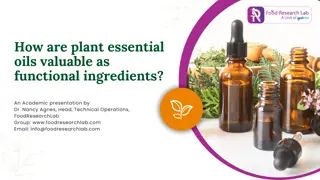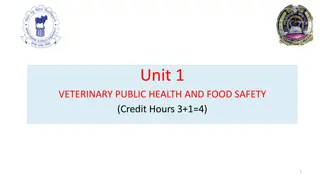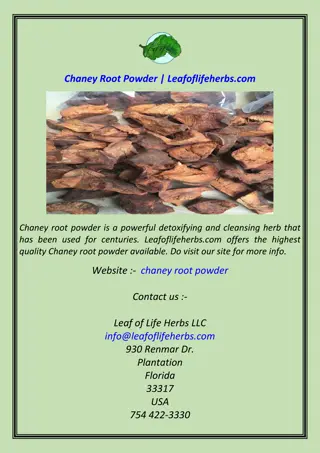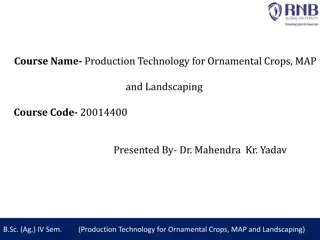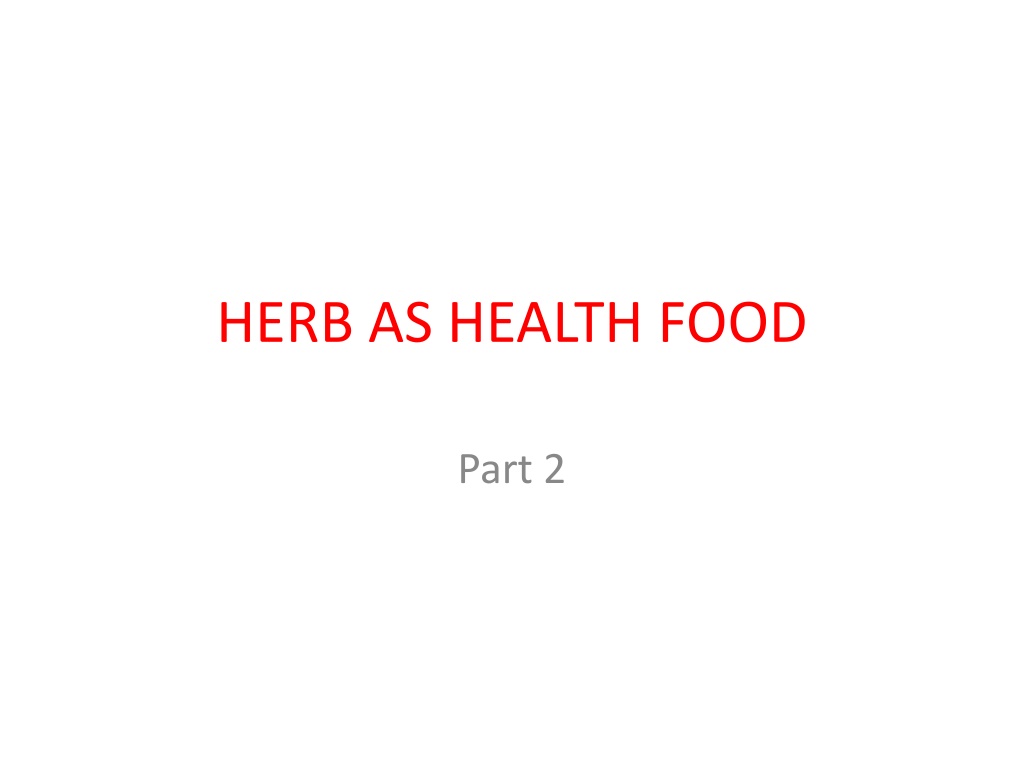
Herbal Health Food Benefits and Nutrition Guide
Explore the health benefits and nutritional content of popular herbs like Ashwagandha, Ginseng, and Spirulina. Learn about their therapeutic properties and how they can support overall well-being. Discover the power of these natural remedies in traditional medicine practices and as superfoods in modern diets.
Download Presentation

Please find below an Image/Link to download the presentation.
The content on the website is provided AS IS for your information and personal use only. It may not be sold, licensed, or shared on other websites without obtaining consent from the author. If you encounter any issues during the download, it is possible that the publisher has removed the file from their server.
You are allowed to download the files provided on this website for personal or commercial use, subject to the condition that they are used lawfully. All files are the property of their respective owners.
The content on the website is provided AS IS for your information and personal use only. It may not be sold, licensed, or shared on other websites without obtaining consent from the author.
E N D
Presentation Transcript
HERB AS HEALTH FOOD Part 2
Withania Ashwagandha consist of dried root of Withania somnifera, fam. Solanaceae, commonly known as Indian Ginseng . It is one of the most important herb ofAyurveda. The main chemical constituents of drug is alkaloid (withanine)and steroidal lactone (withanolide, withaferinA). Sitoindosides and acylsterylglucosides in Ashwagandha are anti- stress agents. Ashwagandha possesses antioxidant, enhancing, antiparkinsonian, antitumor properties. Ashwagandha is also used as an "adaptogen" to help the body cope with daily stress, and as a general tonic. Ashwagandha is used as a household remedy by Indians, who consider it as the best potent regenerative tonic for old people and children, and as aphrodisiac by young people. anxiolytic, memory
Ginseng Consist of dried roots of Panax ginseng and other species of Panax like Panax japonicus (Japanese Ginseng), Panax pseudoginseng (Himalayan Ginseng), Panax quinque-folius (American Ginseng). Mainly found in China, Russia, Korea, Japan, Canada and India. In traditional Chinese medicine (TCM), ginseng is used for many purposes, including normalizing blood pressure and blood sugar, as a sexual tonic for both men and women and to strengthen overall health when the body is debilitated. Several saponin glycosides belonging to triterpenoid group, ginsenoside, chikusetsusaponin, panxoside present in drug
More Ginsenosides consists of aglycone dammarol where as panaxosides have oleanolic acid as aglycone. than 13 ginsenosides have been identified. Ginseng has been used in traditional Chinese medicine for centuries. It is used internally in the treatment of debility associated with old age or illness, lack of appetite, insomnia, stress, shock and chronic illness. It encourages the secretion of hormones, improves stamina, lowers blood sugar and cholesterol levels. Ginseng is the top selling herb among in US health food sector
Spirulina Spirulina is a type of blue-green algae maxima) that contains a number of nutrients, including B vitamins, beta-carotene, and vitamin E. Spirulina also contains chlorophyll, and phycocyanobilin and is commonly used as a source of vegan protein. People consider spirulina a superfood due to its excellent nutritional content and health benefits. Research reported that spirulina has antioxidant and inflammation-fighting properties, as well as the ability to help regulate the immune system. (Spirulina antioxidants, minerals,
. One tablespoon or 7 grams (g) of dried spirulina contains: 20 calories 4.02 g of protein 1.67 g of carbohydrate 0.54 g of fat 8 milligrams (mg) of calcium 2 mg of iron 14 mg of magnesium 8 mg of phosphorous 95 mg of potasium 73 mg of sodium 0.7 mg of vitamin C It also contains thiamin, riboflavin, niacin, folate and vitamins B-6,A, and K. Taking spirulina, as part of a balanced diet, may help a person to stay well nourished




